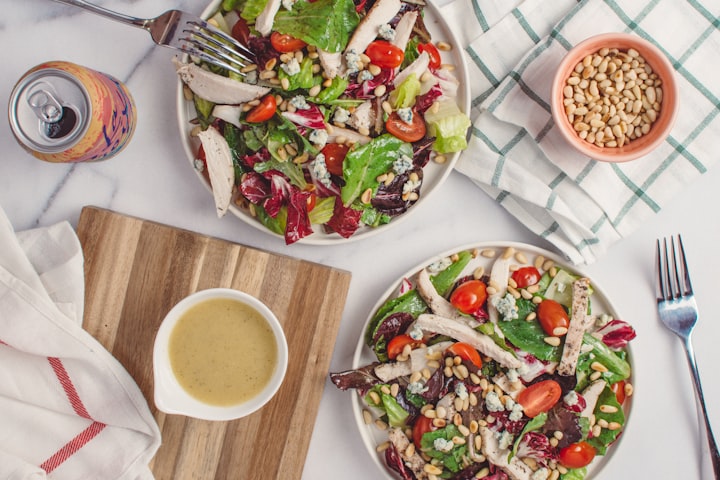
Foods that are typically avoided on the keto diet are processed foods and sugary items. Many people also avoid dairy products, legumes, and grains while following a keto diet.
What is keto and why is it so popular?
The ketogenic diet, or simply keto, is a low-carb, high-fat diet that has gained immense popularity in recent years. The main goal of this diet is to achieve a state of ketosis where the body burns fat for energy instead of glucose (sugar). This happens when you drastically reduce your carbohydrate intake and replace it with healthy fats and proteins.
Keto followers avoid foods rich in carbohydrates such as grains, sugars, fruits (except berries), starchy vegetables like potatoes and corn, and processed foods. Instead, they consume high-fat sources like avocados, nuts and seeds, oils, and butter while also getting their protein from meat products like beef, poultry or fish.

The popularity of the keto diet could be attributed to its quick results in weight loss. However, some experts have raised concerns about long-term health effects due to the high consumption of saturated fat from animal products. Nonetheless, the ketogenic diet remains one of the most sought after diets due to its effectiveness in achieving weight loss goals.
What foods are keto-safe?
On the keto diet, one must avoid foods that have a high carb count. Foods like grains, sugar, and starches are not recommended for those on the keto diet due to their high carb content. Processed snacks and bakery items are also off-limits as they contain added sugars and refined flour.
However, there are plenty of keto-safe food options that can be incorporated into the diet plan. Healthy fats such as avocados, nuts, seeds, and oils are great sources of energy while keeping you in ketosis. Non-starchy vegetables like broccoli, cauliflower, spinach or kale can also be consumed in abundance on the keto diet without taking you out of ketosis.
Incorporating protein sources such as eggs, meat or fish add important macronutrients to your meals while staying within your daily carb limit. Dairy products such as cheese and full-fat yogurt can also be enjoyed in moderation by those who tolerate lactose well. Overall the key is to choose whole foods with low carbs that fit within your macro goals for each day on this particular diet plan.

What are the foods to avoid on a ketogenic diet?
The ketogenic diet is a low-carb, high-fat diet that has gained popularity in recent years. While it can lead to significant weight loss and other health benefits, it requires strict adherence to certain dietary guidelines. One of the most crucial aspects of a keto diet is avoiding foods that contain high amounts of carbohydrates.
Foods that should be avoided on a keto diet include grains, legumes, fruits (except for small amounts of berries), sugary drinks and snacks, processed foods, and starchy vegetables such as potatoes and corn. These foods are high in carbohydrates and can quickly kick your body out of ketosis.
It's also essential to limit your intake of certain dairy products like milk and yogurt which contain lactose - a type of sugar. Instead, opt for full-fat cheeses or cream with no added sugars. Overall, maintaining a ketogenic diet requires careful attention to your food choices to help you stay in ketosis and reap the benefits it offers.
The best foods to eat on a ketogenic diet
The ketogenic diet is a low-carbohydrate, high-fat eating plan that focuses on meat, fish, eggs, and non-starchy vegetables. It eliminates grains, legumes (including peanuts), sugar-laden foods and drinks, and most fruits. This diet encourages the body to burn fat for energy instead of glucose or carbohydrates.
Some great food options for a ketogenic diet include grass-fed beef, wild-caught salmon, free-range chicken eggs, avocados, and olives for their healthy fats. Leafy greens like spinach or kale provide fiber as well as vitamins A and C; nuts such as almonds can be enjoyed in moderation due to their high-calorie count but are also packed with protein and healthy fats. Berries like raspberries or blackberries are lower in carbohydrates than most other fruits so make a great addition to keto-friendly recipes.
Overall the key is to focus on nutrient-dense whole foods while avoiding processed products or refined sugars which can trigger insulin spikes making it difficult to maintain ketosis – the metabolic state necessary for the benefits of this plan. By sticking with these guidelines you'll be able to create satisfying meals that keep within your macros while staying full all day long!
Summary
Keto, short for ketogenic, is a low-carb, high-fat diet that has gained popularity over the years. The main idea behind this diet is to reduce your carbohydrate intake while increasing your fat consumption. This process puts your body into a metabolic state called ketosis where it burns fats instead of carbohydrates for energy. When following the keto diet, there are several foods you should avoid to maintain the desired state of ketosis.

Most importantly, you should avoid any food high in carbs such as grains and sugars. This means that you will need to cut out most types of bread, pasta, rice, cereals and baked goods from your diet. Additionally, you should also stay away from fruits with high sugar content like bananas and mangoes. Another food group to be mindful of when on a keto diet is starchy vegetables such as potatoes and corn which can quickly add up in carbs.
Lastly, processed foods are generally discouraged when following a keto lifestyle because they often contain hidden sugars or simple carbohydrates that may throw off your macros - which refers to the proportion of macronutrients (carbs, proteins and fats) consumed daily. Therefore it's important to check nutrition labels carefully before consuming any packaged foods while on this eating plan.





Comments
There are no comments for this story
Be the first to respond and start the conversation.